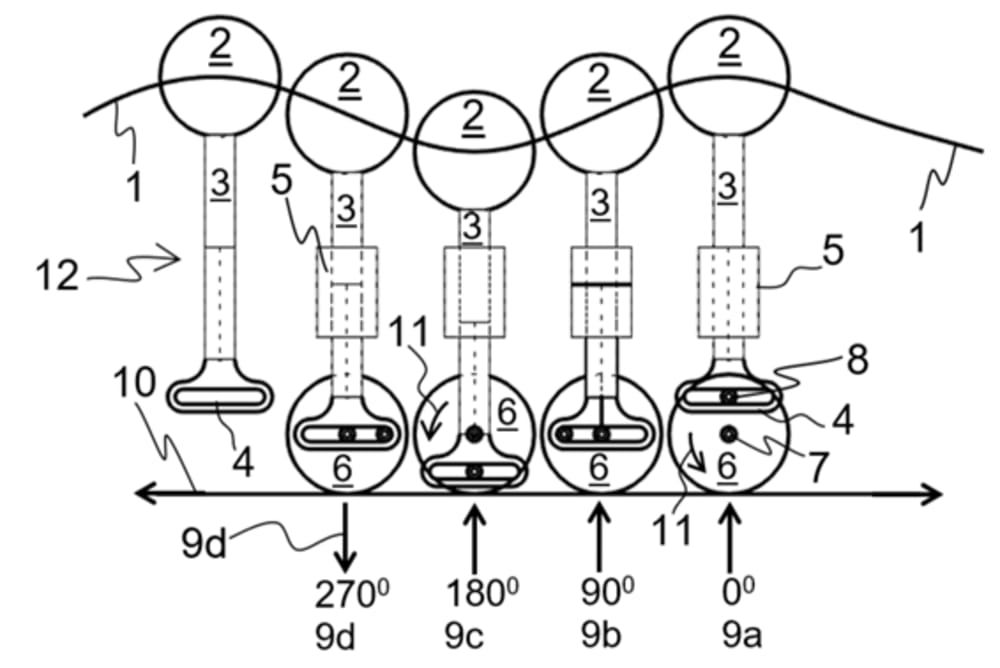1st Picture: FIG 2 illustrates a side view of water waves 1 forcing a float 2 up and down reciprocating a Scotch Yoke mechanism 12 that is forced into motion by the water waves 1 moving under a floating structure 2 connected to the reciprocating motion mechanism comprised of:
A float 2, reciprocating rod 3, and slotted Scotch Yoke 4, converts the linear motion of 9a, 9b, 9c, and 9d of a slider being lifted 9c, 9b, and 9a and lowered 9d from a wave 1 traveling under the float 2, into rotational motion 11, or vice versa. This invention teaches a water wave 1 generates electricity from lifting and lowering floating assemblies 12 from float 2 buoyancy UP and DOWN on water wave 1.
Floating assembly 12 is comprised of a buoyant float 2 connected to reciprocating rod 3, reciprocating within a cylinder 5. Rod 3 connects float 2 to slotted Scotch Yoke 4 to force rotation of flywheel 6 around flywheel center point 7 relative to forces applied within reciprocating Scotch Yoke slot 4 from rotating pin 8, providing electric generator rotation.
Variations are provided with optional shapes and mechanisms to optimize buoyant float 2 motions from water wave 1 that reciprocates 9a, 9b, 9c, and 9d within cylinders 5. Scotch Yoke mechanism 12 can float horizontally on water surface spaced waves. Patents Pending
Like this entry?
-
About the Entrant
- Name:David Zornes
- Type of entry:individual
- Software used for this entry:Rhino CAD
- Patent status:pending

